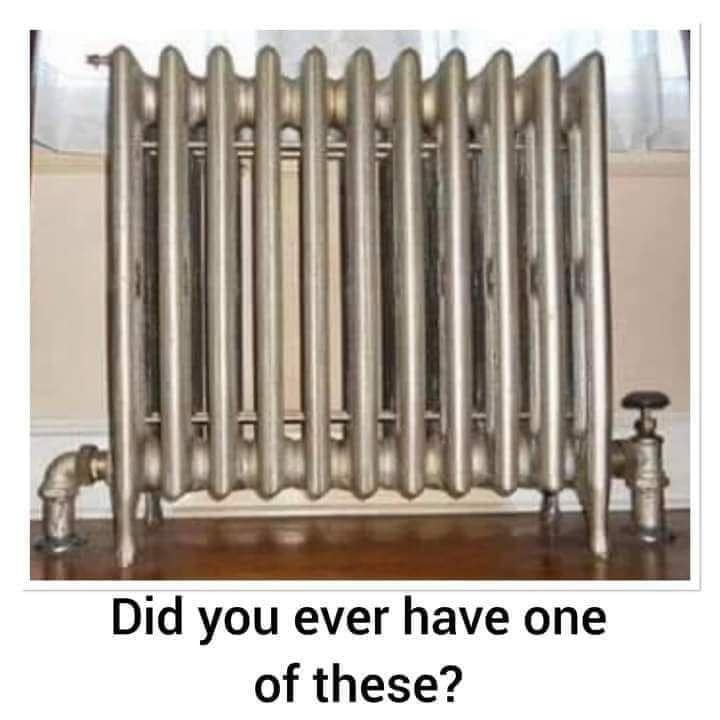Radiators are essential components of heating systems in many homes, providing warmth and comfort by transferring heat from one medium to another. Although radiators have been around since the 19th century, their design and functionality have evolved to meet modern heating demands. From traditional cast iron radiators to innovative underfloor heating, each type of radiator serves a unique purpose and offers distinct advantages. In this article, we’ll explore the various types of radiators, their benefits, and how they can help you create an efficient and comfortable indoor environment.
1. What is a Radiator and How Does It Work?

Radiators are heat exchangers that transfer thermal energy from one medium—typically hot water, steam, or electricity—into the air to warm a room. The heat is generated in a boiler or heating system, and then either pumped or flows through the radiator. From there, the radiator disperses the warmth, either through radiation (directly emitting heat) or convection (heating the air around it, which then circulates in the room).
Interestingly, most modern radiators actually rely more on convection than pure radiation. This is why you often see finned designs, as fins increase surface area to improve the transfer of heat to the surrounding air.
2. A Brief History of Radiators
The concept of a radiator for home heating dates back to the 19th century. The earliest radiator was patented by Denison Olmsted in 1834, though it was Franz San Galli, a Prussian-born Russian inventor, who developed the first heating radiator in 1855. By the late 1800s, companies like the American Radiator Company began producing cast iron radiators, which were cost-effective and durable. These early designs laid the groundwork for the variety of radiator types we see today, each optimized for different energy sources and heating methods.
3. Steam Radiators: Classic Heating with Unique Challenges
Steam radiators were among the first types used in buildings, as steam can travel through pipes without the need for pumps, making it ideal for older or tall buildings. Steam radiators operate at high temperatures, providing intense heat, but they come with a few drawbacks:
- High Heat Loss: Steam systems are less efficient because the higher operating temperature leads to greater heat loss.
- Steam Hammering: When condensed water pools in horizontal pipes, it can cause a loud “steam hammer” noise as steam pushes it through the system. This is often due to poor drainage or a slight misalignment in the piping.
While steam radiators are effective, their downsides, such as noise and inefficiency, have made them less popular in modern homes. However, they remain an important heating option in older buildings and urban areas.
4. Hot Water Radiators: Efficient and Quiet Heating
Hot water radiators are more commonly used in contemporary heating systems due to their efficiency and quiet operation. A hot water radiator consists of a sealed metal container filled with hot water supplied by a boiler. As the water circulates through the radiator, it cools down and returns to the boiler to be reheated. The advantages of hot water radiators include:
- Quiet Operation: Unlike steam, hot water radiators do not produce hammering noises, making them more suitable for residential use.
- Consistent Heat: The lower temperature provides a gentle, even warmth, making rooms feel consistently comfortable.
Hot water radiators are ideal for homes that require reliable and efficient heating with minimal noise. Many of today’s hot water radiators are designed to be sleek and fit seamlessly into modern interiors.
5. Electric Radiators: Flexibility and Convenience

Electric radiators use electricity to produce heat directly at the radiator location. They are often filled with a fluid, such as oil, which helps distribute heat evenly through convection. Some advantages of electric radiators include:
- Portability: Many electric radiators are portable and don’t require a connection to the central heating system, making them versatile for use in any room.
- Independent Control: You can turn individual units on or off as needed, which is energy-efficient for rooms that don’t require constant heating.
- Dual-Source Capability: Some models, such as heated towel rails, can operate on both electric power and hot water, switching based on the building’s heating needs.
Electric radiators are particularly useful for spaces that don’t need regular heating, like guest rooms or bathrooms. However, they can be more expensive to operate over time due to electricity costs.
6. Types of Radiators by Design
Radiators come in various shapes and materials, each with unique benefits. Here’s a look at some popular types:
Cast Iron Radiators
Cast iron radiators are classic and durable, known for their high thermal mass, which means they retain heat for long periods. This type is ideal for rooms that require steady, prolonged warmth, even after the heating system is turned off. Although cast iron radiators are less common in new constructions, they remain a popular choice in vintage and traditional settings.
Hot-Water Baseboard Radiators
Baseboard radiators, or “fin-tube radiators,” consist of copper pipes with aluminum fins attached to increase surface area. They heat rooms primarily through convection, drawing cool air in from the bottom, warming it, and releasing it at the top. Baseboard radiators are effective but need to remain unobstructed to function correctly.
Panel Radiators

Panel radiators are sleek, modern options often hung on walls. Made of flat or corrugated steel panels, they’re highly efficient for hot water heating systems. Their compact design and wall-mounted installation make them a great choice for rooms with limited floor space.
Aluminum Radiators
Aluminum radiators are lightweight, efficient, and responsive to temperature changes. They are known for their excellent thermal conductivity, making them quick to heat up and cool down, which is ideal for maintaining consistent room temperatures with minimal energy waste.
7. Advanced Radiator Types for Modern Homes
With technology advancements, modern homes can take advantage of more sophisticated radiator designs that improve efficiency and comfort.
Fan-Assisted Radiators
Fan-assisted radiators contain a small fan that blows air over the heat exchanger, distributing warm air evenly throughout the room. Although they require electricity, fan-assisted models offer rapid heating and can maintain a consistent temperature, making them suitable for large spaces.
Underfloor Heating Systems
Often called “radiant heat,” underfloor heating systems distribute heat evenly from the floor up. These systems use a network of pipes or heating cables beneath the floor surface, offering discreet and effective warmth, particularly with conductive materials like tile. While underfloor heating is more costly to install, it’s highly efficient and offers unparalleled comfort.
Skirting-Board Heating
Skirting-board heaters integrate radiators within skirting boards, offering a low-profile solution for room heating. This innovative design allows efficient heating without sacrificing wall or floor space. It’s a practical choice for compact rooms or spaces with limited floor space.
8. Indoor Climate Impact of Radiators
Radiators not only provide warmth but also impact indoor humidity levels. Radiant heating tends to reduce indoor humidity, which can cause dry skin, discomfort, and even shrinkage of wooden furniture or flooring. Using a humidifier alongside radiators can help balance humidity levels and improve overall comfort in the home.
Conclusion: Choosing the Right Radiator for Your Space
Radiators are a vital part of any heating system, providing warmth and comfort while adding style to your home’s interior. From classic cast iron designs to modern underfloor systems, each type of radiator offers unique benefits that can meet various heating needs. When choosing the right radiator, consider factors like room size, energy efficiency, and desired aesthetics. With the right radiator and proper maintenance, you can create a cozy, energy-efficient environment that keeps your home comfortable year-round.
Whether you’re renovating an old home or building a new one, understanding the different radiator options will help you make an informed decision, ensuring warmth, efficiency, and style in every room.


